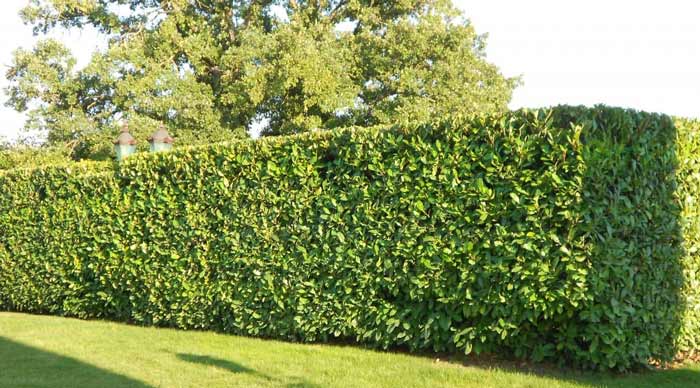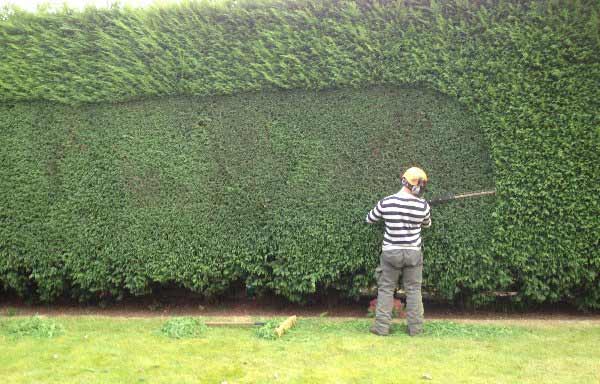Hedge trimming or pruning is a service that varies in price as the size and length of hedges range from 1m High x 2m long all the way up to 10m high x 30m in length. We are going to break down pricing for you in this article.
Hedge trimming starts at $95 and goes right up to $1,320. The national average is $540 depending on the size and length of the hedge and its state of disarray.
The price for this will depend on the about of square meters of hedge face being trimmed as well as other factors like the height of the hedge, tree type and access.
Table of contents
ToggleCost of hedge trimming by size
| 1m | 2m | 3m | 5m | 6m | 8m | |
|---|---|---|---|---|---|---|
| 2m | $45 | $90 | $120 | $310 | $390 | $450 |
| 4m | $75 | $120 | $160 | $390 | $470 | $550 |
| 6m | $120 | $175 | $190 | $470 | $580 | $650 |
| 8m | $160 | $220 | $250 | $580 | $630 | $750 |
| 10m | $190 | $270 | $310 | $630 | $690 | $850 |
| 12m | $230 | $310 | $350 | $690 | $720 | $950 |
| 14m | $270 | $340 | $390 | $720 | $760 | $1050 |
Cost to cut the top off a hedge
If you want to take the top off a hedge it is important to remember the price will increase exponentially depending on the height of the hedge and how much you want to take off.
So a 3-metre high hedge is going to be cheaper to the top than a 7m high hedge. Also, the height of the cut is important. With the 7m hedge example. It will be cheaper to cut it down to 2m high, than to 4m high.
Even though you will be taking more off when you cut it down to 2m high, it is a lot easier to do because you are working close to the ground.
The further off the ground a tree service needs to work, the more difficult and time-consuming the job becomes and the more it will cost.
The cost to trim a hedge ranges from $100 right up to $1,700 depending on size, length, and ease of access.
A hedge touching power lines or lines running through it for example will cost more because of the time taken to work around the obstacle. Time is money these days and the longer it takes the more it will cost you.


Use a Lawn/ garden maintenance service when possible
This will depend on the size of the job. Most lawn and garden maintenance crews are equipped to work on hedges that are 5m high or smaller. Anything larger and you are best getting a tree service in to do the job.
Why a lawn and garden care company and not a tree service?
Because they are cheaper!
Lawn & garden services are cheaper for hedging
Because of their reduced overheads lawn and garden services are the way to go for smaller jobs. Again, I would not get them in for any hedge larger than 5m as you run the risk of them injuring themselves on your property.
With no insurance, this could leave you liable. It’s just not worth it.
Big job: Tree pruning services
Small job: Lawn & garden services (less than 5m)
How often should I prune a hedge?
If you want it to look manicured and really set off your property, then the more often you trim your hedge, the better. If you leave it too long and only trim your hedges once per year, you will only achieve a “hacked-at” look and never a nice manicured hedge.
How much per hour for hedging?
Again it depends on the job. A lawn care outfit will charge about $90 – $110 per hour, whereas tree services will charge closer to $250 per hour.
You need to remember these are different job types and sizes. There is also much greater safety, expertise and security using a tree service.
What does hedge removal cost?
In some cases, you might decide that it is too much upkeep to maintain a hedge and you would like to remove it. This is understandable as it can be a drain on your finances.
The cost to remove a hedge is different from just trimming it. Please refer to our post on Tree Removal Cost Guide for accurate information on the cost of removing hedges.
A couple of things to remember.
- You will need to also remove the hedge stumps if you are hoping to replant in the same location.
- If the hedges are smaller than 5m, I suggest getting a lawn care company to do the job, as it will save you at least 50%.
Is it better to use sheers for hedge trimming?
There are 2 main tools used to trim hedges. A Hedgehog or a pair of hedge shears. A hedgehog is a motorized machine that is designed to cut through fine leaves and branches for hedging.
Which one to use will depend on the state of your hedge. If it is well kept and you are strictly going to be just sheering off fine leaves and needles, then you can use a hedgehog. It is faster and will give a very straight and flat surface.
If your hedge is a little more overgrown then I suggest using a pair of shears. The reason for this is the hedgehog makes a mess of any branch bigger than a few millimeters thick. Once you start cutting through woody stems that are 0.5cm thick, the Hedgehog will do a very poor job and leave a very “hacked at” look. Shears on the other hand will cut through clean.












